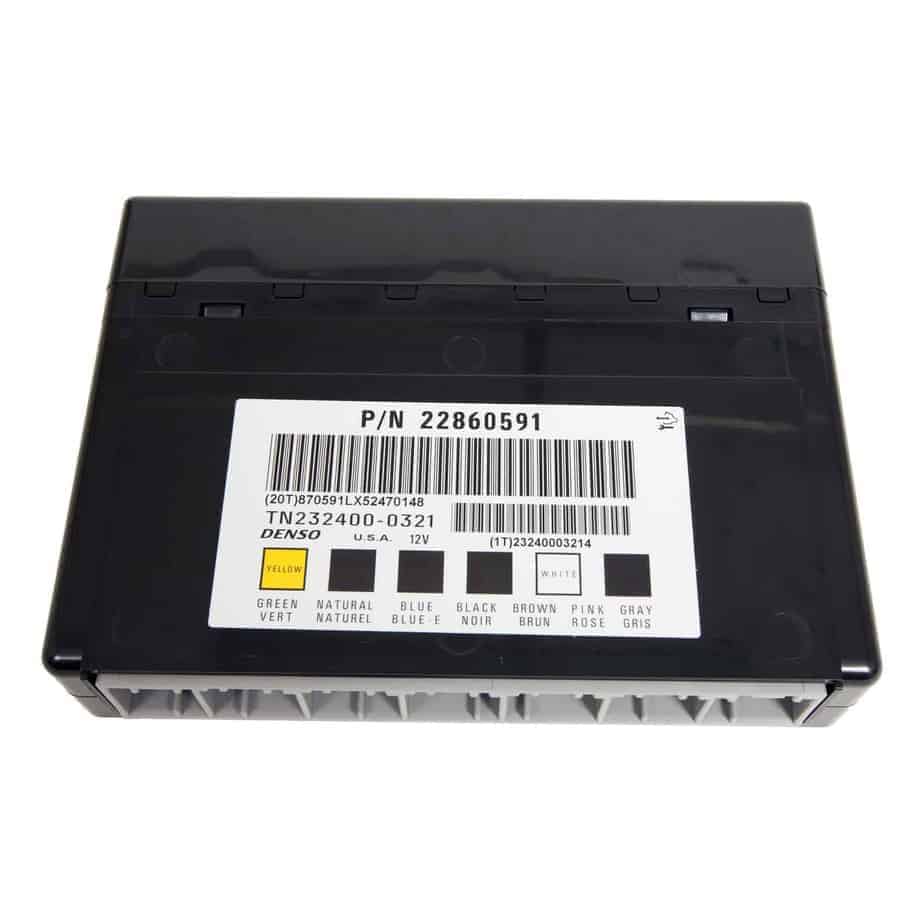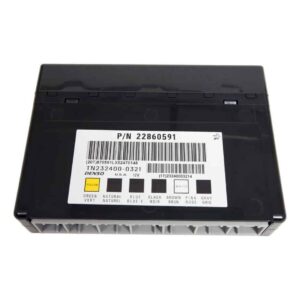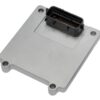End the Electrical Gremlins in Your GM Vehicle
Are you dealing with bizarre and frustrating electrical issues in your 2006-2013 Chevrolet Impala? Maybe the power windows have a mind of their own, the door locks work intermittently, or the security light stays on, preventing your car from starting. These aren’t random glitches; they’re classic signs of a failing Body Control Module (BCM). The BCM is the central nervous system for your car’s body electronics, and when it fails, it can cause chaos. This isn’t just an annoyance—it’s a reliability and safety issue you can’t ignore.
A Technician’s Notebook: The Intermittent Impala
I remember a 2011 Impala that came into the shop with a list of complaints that seemed totally unrelated. The owner said on some days the radio wouldn’t turn on, and on others, the interior lights would flicker. The biggest problem was the intermittent no-start. After checking the battery, starter, and ignition switch, all of which were fine, we hooked up the scan tool. We found a series of communication error codes (U-codes) pointing to the BCM. A failing BCM can send corrupt data across the vehicle’s network, causing other modules to act up. We replaced it with a VIN-programmed unit like this one, and every single one of the customer’s ‘random’ issues disappeared instantly. It’s a fix I’ve performed hundreds of times on these platforms.
The Simple, Reliable Solution: A VIN-Programmed BCM
Forget expensive diagnostic fees and programming charges at the dealership. We offer a direct, effective solution. This is a genuine GM Body Control Module that we professionally program to your vehicle’s exact specifications using your VIN. This isn’t a generic, one-size-fits-all part. By providing your VIN at checkout, you ensure that the module arrives with the latest GM software updates already installed, making the repair process as simple as possible. Our cloning service transfers the critical data, making for a seamless replacement.
Is Your Vehicle Showing These Symptoms?
- ✔ Power windows, door locks, or mirrors operating erratically or not at all.
- ✔ Interior or exterior lights flickering, staying on, or not working.
- ✔ The security system light is illuminated on the dash, possibly causing a no-start condition.
- ✔ Horn honking unexpectedly or not working when pressed.
- ✔ Instrument cluster gauges behaving erratically or going dead.
- ✔ Diagnostic Trouble Codes (DTCs) related to communication errors, such as U0140, U0155, or other U-codes.
A Straightforward Guide to Installation
- ✔ Safety First: Always disconnect the negative terminal from your vehicle’s battery before starting any electrical work.
- ✔ Locate the BCM: On the 2006-2013 Impala, the BCM is typically located on the left (driver’s) side of the dashboard, often behind the lower dash panel near the steering column.
- ✔ Disconnect and Remove: Carefully unplug the electrical connectors from the old BCM. They have locking tabs that need to be depressed. Once disconnected, remove any bolts or clips holding the module in place and take it out.
- ✔ Install the New BCM: Mount your new, pre-programmed BCM in the same location and securely reconnect all the electrical connectors. You should hear a ‘click’ as they lock into place.
- ✔ Reconnect and Test: Reconnect the negative battery terminal. Turn the key to the ‘On’ position and test all body functions—windows, locks, lights, etc.—to confirm the repair.
Important Post-Installation Steps
In many cases, the vehicle will be fully functional after installation. However, depending on your specific model and its options, a couple of additional steps, known as relearn procedures, might be necessary. These require a professional-grade scan tool.
- Airbag System Sync: If your airbag warning light is on after installation, a procedure called ‘Setup SDM Primary Key in BCM’ is needed to sync the new BCM with the airbag system.
- Brake Pedal Position Relearn: Some models may require a brake pedal position sensor recalibration to ensure the brake lights and traction control system function correctly.
Please Note: We always return your original module with your newly programmed one. We do not require a core. Procedures can vary slightly by vehicle. Always consult a factory service manual or a certified technician if you are unsure about any step.
Verified Vehicle Compatibility
This BCM is a direct replacement for a wide range of GM vehicles and interchanges with numerous part numbers. Please verify your original part number against this list or confirm your vehicle is listed below.
Replaces Part Numbers: 10382479, 15093910, 15276271, 15299986, 15819552, 15828601, 15837419, 15872388, 15872421, 15880684, 15921352, 15921353, 15948438, 15948439, 20815898, 20839063, 20864767, 20864768, 20921435, 20921436, 20935349, 22860591, 25826124, 25826125, 25847588, 25847589, 25892622, 25910474, 25934762, 25934763, 95151084
Fits Models Including:
- 2007-2012 Acadia
- 2010 Avalanche 1500
- 2011-2013 Caprice
- 2012 Captiva Sport
- 2008-2013 CTS
- 2006-2011 DTS
- 2008-2012 Enclave
- 2007-2009 Equinox
- 2010 Escalade, ESV, EXT
- 2008-2012 Express/Savana Vans (1500, 2500, 3500)
- 2008-2009 G8
- 2008-2009 Hummer H2
- 2006-2013 Impala
- 2006-2011 Lucerne
- 2006-2007 Monte Carlo
- 2007-2010 Outlook
- 2007-2009 SRX
- 2010 STS
- 2010 Suburban 1500
- 2010 Tahoe
- 2007-2009 Torrent
- 2009-2012 Traverse
- 2008-2010 Vue
- 2010 Yukon & Yukon XL 1500
Note: This is not an exhaustive list. Location and specific IDs can vary. Please match your part number or contact us with your VIN to ensure compatibility.
Frequently Asked Questions
Frequently Asked Questions
Why do you need my VIN?
Your Vehicle Identification Number (VIN) allows us to access the specific software and calibration files for your car’s exact build. This ensures the BCM works correctly with the options your car was built with, like the type of transmission, security system, and other features. It’s the key to a true plug-and-play solution.
What is a “Cloning Service”?
Our cloning service involves transferring the essential vehicle-specific data from your original BCM to the replacement unit. This process helps ensure that security information and other learned parameters are carried over, which drastically simplifies the installation process and often avoids the need for complex relearn procedures at a dealership.
Will I need a mechanic to install this?
For many DIY enthusiasts with basic tools, this is a manageable job. The BCM is usually accessible behind a dash panel. However, if you are not comfortable working around vehicle wiring or if a post-installation relearn procedure is required (which needs a scan tool), we recommend seeking help from a qualified professional mechanic.
What happens to my old BCM?
We do not require your old module as a core. We will ship your original BCM back to you along with the newly programmed replacement unit. You can keep it or dispose of it as you see fit.
Will this fix my check engine light?
A BCM typically controls body functions, not engine performance. While a faulty BCM can sometimes cause communication issues that trigger a check engine light (with U-codes), it’s not the primary cause for performance-related codes (P-codes). Please ensure your vehicle has been properly diagnosed before ordering.


